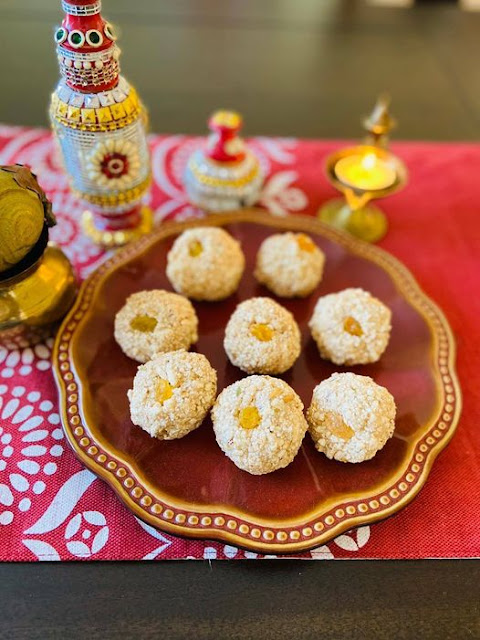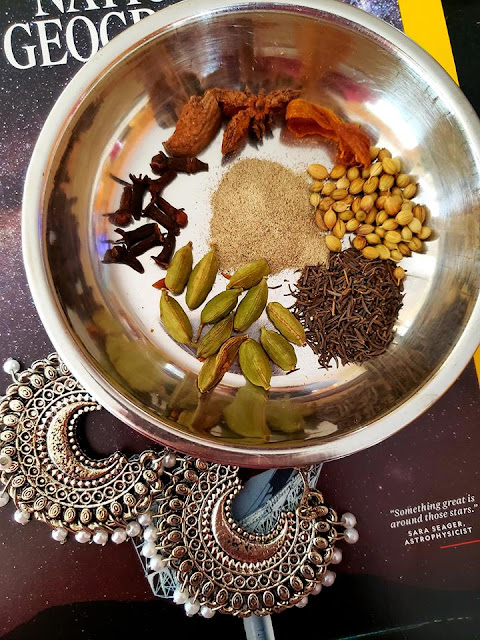I have never had a
Goalondo Murgi in all my childhood.
I do not know anyone in my family who has tasted this dish cooked by the boatmen on a Goalondo Steamer. That is kind of justified given that my family on the large is
probashi bangali, meaning Bengalis settled outside of Bengal. Their ties to East Bengal might seem very very faint but quiet a few of my Baba's uncles spoke in a heavy "Bangal accent" and my Dad fondly remembers the single trip that he made to Dhaka as a young boy with his grandmother, who had her maternal family in that area. He did go on a steamer on his travel but he has never mentioned the Goalondo Steamer curry. I assume he did not taste it.
In the last couple of years the internet is however awash with the recipe of this rustic curry cooked by the Sylheti boatmen on the steamer that plied the Padma. A
recipe with a story always intrigues me and this one had enough nostalgia and romanticism going for it. However I wasn't fully convinced to cook it. Yet.
Goalondo Ghat is a small town on the southern banks of Padma, or rather the confluence of Padma and Brahmaputra, in Bangladesh. Way back in 1871, the Eastern railways established a train line from Kolkata to Goalondo. To go from Kolkata to Dhaka, one would take a train from Sealdah Station which would reach Goalondo ghaat after an overnight journey. There you would then change to a steamer which chugged on the waters of river Padma and traveled down to Naraynganj or Chandpur. Once at Narayanganj, you would then again take the train to Dhaka.
As we see, Goalondo was a major transport hub with daily service steamers connecting it to railway service in Narayanganj, Chandpur as well as to steamer services to the regions of Sylhet from where you could then proceed to the tea plantations in Assam.
A vivid picture of the journey is descirbed in
this Handbook from 1913, "
From the Hooghly to the Himalayas"
"
From Goalundo to Narayanganj by steamer on the Padma, as the Ganges is called on its lower reaches, takes about seven hours, and as the boats are comfortable and the prospect always pleases, the journey is well worth making and serves as a introduction to the great system of waterways that is the main characteristic of this province. The amazing width of the river, the fights and shades reflected on its muddy waters, the vivid green of the fields of rice and jute that fringe the banks and recede into the mists of the far horizon across the flat alluvial plains, the thatched huts with hog's-back roofs - or huts modernized and ugly with the more water-proof iron tops—and the little clusters of palms and other trees - all this makes up a moving panorama that one may watch for hours untired."
I haven't been to Goalondo or on that steamer, but the
stories and songs of these boatmen have been retold in many Bengali tales. Aided by literature and imagination, I can imagine the deckhands(also known as Khalasis) preparing their mid-day meal while singing Bhatiyali songs as the steamer plowed down the river. These were
men probably from Sylhet or Chittagong, regions famous for their cooks. With sparse ingredients in hand they cooked a chicken and potato curry on the days they could buy
dishi murgi or fowls at a bargain price. While they cooked with onion, garlic, mustard oil and lots of red chili ,the fragrance of steaming hot rice and the bubbling curry wafted around the boat, the flavors intensified by the boatmen's songs, songs of the joys and pains of the mighty river.
The life and curry that we romanticize now must have been a routine and mundane thing for those boatmen. As the curry gained popularity, the pise hotels around the ghaat started offering them to travelers. In those days murgi/chicken was taboo in most Hindu homes. For a long time, we weren't allowed to cook and eat murgi in my grandmother's home, though goat meat was allowed. So naturally the lure of the
gorgore laal murgir jhol at these hotels and steamer was hard to resist.
Now I have tried two recipes of
Goalondo Steamer Fowl Curry. One was guided by
Pritha Sen's description of the curry as a "
fiery, thin red curry with a layer of oil on top". She had done extensive research on the recipe and had deduced
dry shrimp paste as the magic ingredient which the boatmen used.
Very logical, as dried fish(shukti) or dried shrimp paste was very popular among the Sylheti cooks and it was an inexpensive ingredient that could be carried on their boat journeys. I got a bottle of shrimp-chilli paste from the Asian Market but I am not sure if it is the right kind. I worked around what Pritha Di said but I am sure my Goalondo Fowl Curry was nowhere as good as hers.
The rest of the ingredients etc. was based on a recipe that
Ahona Gupta gave me. She had found it on a cooking forum in FB and made it few years back. Her recipe asked for same ingredients but the shrimp paste. Other than that her recipe called for a more simpler method of cooking and also she advised against adding any water. However I did add water because you know what, the curry has to be a "thin red curry".
My curry was thin and tasted pretty good but didn't have the fiery red color, probably due to my skimping on the red chillies. Mine also tasted more or less like the Murgir Jhol my Mother or Mother-in-law cooks with the faint note of the shrimp paste adding a new layer. It has to be more about my cooking though as the recipes is perfect and I
hope with more trials my murgir jhol gets the "gorgore laal" (fiery red) rustic flavor like that of the steamer fowl curry.
Method I
Start off with
1lb of bone-in chicken, skinned and cut in pieces
Make a paste of
5 fat cloves of garlic
1" of ginger
4-5 Dry red chilli that has been soaked for 15-20 mins(Note: My curry was medium hot, you need to use double the chilli to have a more spicy curry )
I made the
paste using my mortar and pestle given that this was supposed to be a rustic curry. I am sure if the boatmen had an electric grinder they would have used that, so please take liberties and do your best.
Now grate
3/4th of a red onion and keep aside. I was lazy to grate and so boiled and then made a paste of the Onion. Also the onions I get here are really big in size, so 3/4th of my big onion would amount to 2 small onion.
Chop
1 potato in 4 quarters
Now wash and clean the chicken pieces. Marinate the
chicken and potatoes with
half of the garlic-chilli paste
2 tbsp of Mustard oil
half of the onion paste
generous sprinkle of turmeric
little salt
Keep aside for 30 minutes to an hour.
Note: If I am not wrong, Pritha Di had asked for a little fish sauce in the chicken marinade which I skipped.
Heat
Mustard Oil in a Kadhai/Wok. Be generous with your mustard oil
When the oil is hot, add
the rest of the onion paste
rest of the chilli-garlic paste
about 1/2 tsp of this dry Shrimp paste/dry Shrimp powder.
Saute the onion and spices until starts turning brown.
Add the
potatoes and the chicken and saute for about 5-6 minutes.When the potatoes start getting a touch of color and the chicken has lost its raw coloring, add about
1 cup of water. Add
salt to taste.
Let the curry come to a simmer. Now reduce the heat, cover the wok/kadhai and let the chicken cook in low heat. After 20-25 mins or so, lift the lid and there is a fair chance that you will see a slick layer of oil floating on the top.
Now open the lid and cook for 4-5 minutes more until the chicken and potatoes are cooked.
Method II
I marinated
1lb chicken and the potatoes with all the ingredients as above(i.e. grated onion, garlic-chili-ginger paste, mustard oil,, salt, turmeric powder)
Now heat mustard oil in a wok/kadhai.
Add the marinated chicken and potatoes. Saute for 8-10 minutes. Now cover, add a little water, salt to taste and let it cook until a layer of oil floats on top and everything is cooked.
Serve this thin curry with steaming hot rice, red onions slices and a twist of lime.
If you like what you are reading, get Bong Mom's Cookbook in your mailbox





















